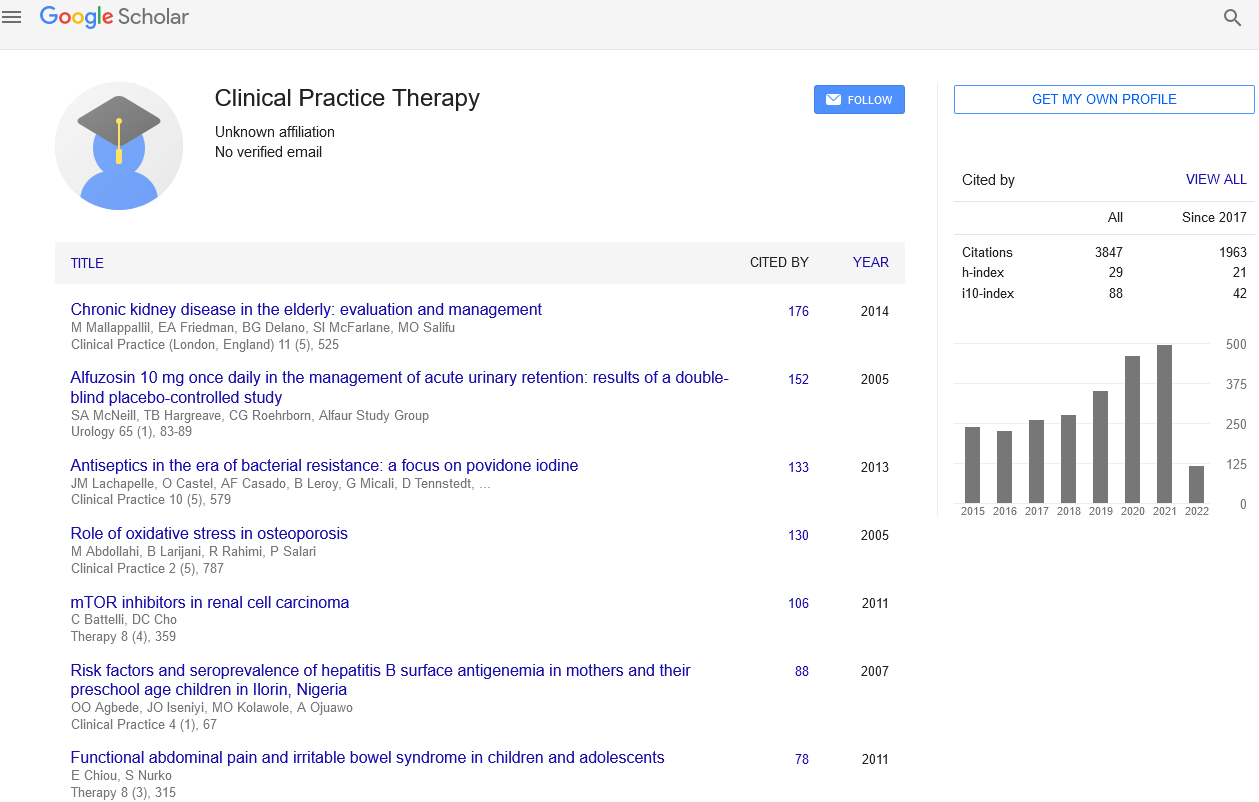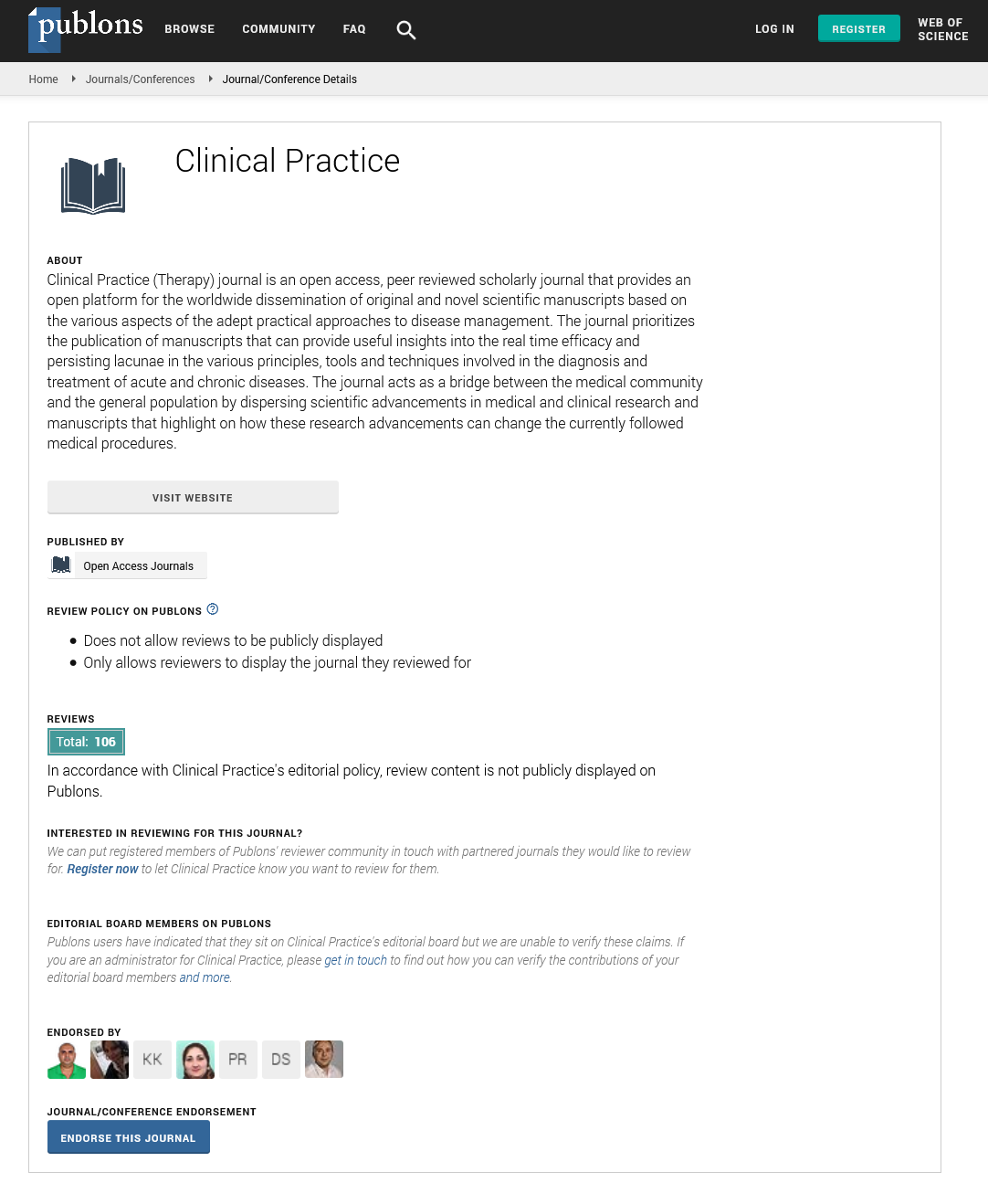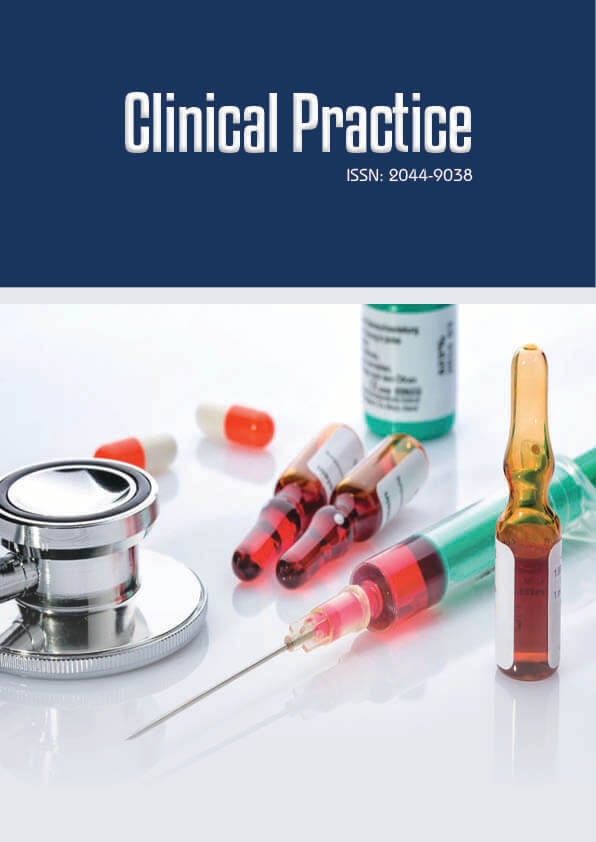Opinion Article - Clinical Practice (2025) Volume 22, Issue 1
The Potential for Success with Conservative and Minimally Invasive Treatment Approaches at Different Stages of Dupuytrenâ≢s Disease
Paula Medhat Ibrahim*
Department of Intensive Care Unit of Mediclinic Parkview Hospital, UAE
- *Corresponding Author:
- Paula Medhat Ibrahim
Department of Intensive Care Unit of Mediclinic Parkview Hospital, UAE
E-mail: XXX
Received: 01-Mar-2025, Manuscript No. fmcp- 25-158677; Editor assigned: 03-Mar-2025, Pre-QC No. fmcp-25-158677 (PQ); Reviewed: 17-Mar-2025, QC No. fmcp-25-158677; Revised: 21-Mar-2025, Manuscript No. fmcp- 25-158677 (R); Published: 28-Mar-2025, DOI: 10.37532/2044-9038.2025.22(1).1-3
Abstract
Dupuytren’s disease, a condition characterized by the progressive fibrosis of the palmar fascia, leads to the formation of nodules and cords that result in contracture of the fingers, causing functional impairment. Traditionally, treatment has focused on surgical intervention, but there is growing interest in conservative and minimally invasive approaches. This opinion article evaluates the potential success of these approaches at various stages of Dupuytren’s disease. Early-stage management may benefit from non-invasive strategies such as steroid injections and physical therapy, while minimally invasive techniques, including needle fasciotomy and collagenase injections, can offer viable alternatives for moderate disease stages. Surgical intervention remains a standard for advanced stages, but conservative treatments may help delay or even prevent the need for invasive procedures.
Keywords
Dupuytren’s disease • Conservative treatment • Minimally invasive treatment • Needle fasciotomy • Collagenase injections • Physical Therapy • Surgical intervention
Introduction
Dupuytren’s disease is a progressive fibroproliferative disorder that leads to the thickening and shortening of the palmar fascia, causing deformities in the fingers, typically starting with the ring and little fingers. The condition can severely affect hand function, particularly in the later stages, when finger contractures become more pronounced. Traditionally, treatment for Dupuytren’s disease has involved surgical intervention to remove the affected tissue or release the contracture. However, in recent years, there has been increasing interest in conservative and minimally invasive treatments, especially for patients in the earlier or moderate stages of the disease. These alternatives offer potential benefits, including fewer complications, quicker recovery times, and the possibility of delaying or avoiding surgery. This article aims to examine the potential for success with conservative and minimally invasive treatment options at different stages of Dupuytren’s disease, focusing on non-surgical approaches that may improve patient outcomes while reducing the need for more invasive interventions [1-3].
Conservative treatments for early-stage dupuytren’s disease
For patients in the early stages of Dupuytren’s disease, when the condition is primarily characterized by the formation of nodules without significant contracture, conservative treatments can be highly effective in managing symptoms and slowing disease progression.
Steroid injections:
Corticosteroid injections are a common non-invasive treatment for early Dupuytren’s disease. These injections can reduce inflammation and alleviate pain associated with the disease, providing temporary relief. In some cases, repeated steroid injections may reduce the size of the nodules, although they are not a cure for the underlying condition. However, studies have shown that steroid injections can help manage symptoms for some time, delaying the progression of contracture [4-6].
Physical therapy and stretching exercises:
Early intervention with physical therapy is another conservative approach that can be beneficial. Stretching exercises, splinting, and hand therapy have been shown to improve joint mobility and reduce the severity of contractures, especially if the disease is diagnosed in its early stages. While physical therapy alone may not halt the progression of Dupuytren’s disease, it can maintain hand function and prevent unnecessary progression to more severe stages, ultimately delaying the need for surgical treatment.
Lifestyle modifications:
Although not a direct treatment for the disease itself, encouraging patients to modify behaviors that exacerbate hand stiffness, such as frequent hand overuse, may have a positive impact on symptom management. Early-stage patients might benefit from reducing repetitive strain on their hands to avoid triggering or exacerbating the disease.
Minimally invasive treatments for moderate stages of dupuytren’s disease
As Dupuytren’s disease progresses, the formation of palpable cords and partial finger contractures can significantly impair hand function. While surgical intervention remains the gold standard for severe cases, several minimally invasive treatments have shown promise for treating moderate stages of the disease.
Needle fasciotomy:
Needle fasciotomy is a minimally invasive procedure that involves using a needle to puncture and cut the thickened fascial tissue, releasing the contracture. This procedure can be performed under local anesthesia and does not require incisions, making it an attractive option for patients who are not yet ready for surgery. Several studies have demonstrated that needle fasciotomy can significantly reduce contracture and improve hand function in patients with moderate Dupuytren’s disease, with relatively low complication rates [7,8].
Collagenase injections:
Collagenase Clostridium histolyticum injections, which have been FDA-approved for Dupuytren’s disease, represent another innovative minimally invasive option. This treatment involves injecting an enzyme that breaks down the collagen in the fibrous tissue, allowing the cords to be more easily released. The procedure has shown positive outcomes in terms of improving finger mobility and reducing contractures, with minimal downtime for patients. Although not suitable for all cases, collagenase injections provide a less invasive alternative to surgery for moderate disease stages.
Surgical intervention for advanced dupuytren’s disease
Despite the growing options for conservative and minimally invasive treatments, surgery remains the gold standard for advanced stages of Dupuytren’s disease. For patients with severe contractures that interfere with hand function, surgical options such as fasciectomy or dermofasciectomy may be required to remove the affected tissue and restore finger mobility. These procedures are highly effective but come with longer recovery times and potential complications, such as scarring and recurrence [9,10].
Conclusion
Conservative and minimally invasive treatment options for Dupuytren’s disease show considerable promise, especially in the early to moderate stages of the condition. Steroid injections, physical therapy, needle fasciotomy, and collagenase injections offer effective alternatives to traditional surgical approaches, with many patients experiencing significant improvement in hand function and reduced contracture. These treatments not only offer the potential to delay or prevent the need for surgery but also minimize the risks and recovery times associated with more invasive procedures. However, the effectiveness of these treatments can vary depending on the stage of Dupuytren’s disease, patient factors, and the specific technique used. Continued research into these non-surgical approaches is essential to identify the most effective protocols for different disease stages and to improve patient outcomes. Overall, a combination of conservative and minimally invasive treatments represents an exciting opportunity to provide patients with more treatment options and better quality of life as they manage this challenging condition.
References
- Negus RPM, JW Stamp, Hadley J et al. Quantitative assessment of the leukocyte infiltrate in ovarian cancer and its relationship to the expression of C-C chemokines. Am J Pathol. 150, 1723-1734 (1997).
- Henze AT, Mazzone M. The impact of hypoxia on tumor-associated macrophages. J Clin Invest. 126, 3672-3679 (2016).
- Hillen F, Griffioen AW. Tumour vascularization: sprouting angiogenesis and beyond. Cancer Metastasis Rev. 26, 489-502 (2007).
- Gabrilovich DI, Chen HL, Girgis KR et al. Production of vascular endothelial growth factor by human tumors inhibits the functional maturation of dendritic cells. Nat Med. 2, 1096-1103 (1996).
- Fang HY, Hughes R, Murdoch C et al. Hypoxia-inducible factors 1 and 2 are important transcriptional effectors in primary macrophages experiencing hypoxia. Blood 114, 844-859 (2009).
- Marjolein MG, Kes Jan Van den Bossche, Arjan W. Oncometabolites lactate and succinate drive pro-angiogenic macrophage response in tumour’s 1874, 188427 (2021).
- Larionov I, Liu T, Riabov V et al. PO-265 Cisplatin induces pro-inflammatory program and modulates pro-angiogenic potential of human tumor-associated macrophages 3, A331 (2022).
- Pilar Chinchilla, Liqing Xiao, Marcelo G et al. Riobo Hedgehog proteins activate pro-angiogenic responses in endothelial cells through non-canonical signaling pathways 9, 570-579 (2010).
- Stephen L Rego, Rachel S. Helms Didier Dreau Breast tumor cell TACE-shed MCSF promotes pro-angiogenic macrophages through NF-κB signaling 17, 573-585 (2022).
- Abolfazl A. Liposome: Classification, Preparation, and Applications. Nanoscale Res Lett. 8, 102 (2013).



